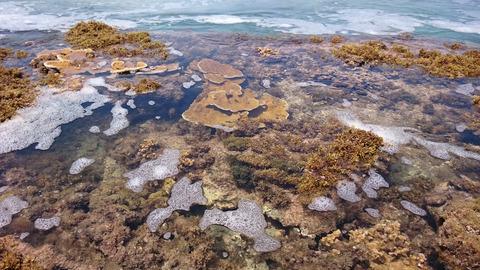当前位置:
X-MOL 学术
›
Funct. Ecol.
›
论文详情
Our official English website, www.x-mol.net, welcomes your
feedback! (Note: you will need to create a separate account there.)
The eukaryome: Diversity and role of microeukaryotic organisms associated with animal hosts
Functional Ecology ( IF 4.6 ) Pub Date : 2019-11-23 , DOI: 10.1111/1365-2435.13490 Javier Campo 1 , David Bass 2, 3 , Patrick J. Keeling 4
中文翻译:

真核生物:与动物宿主相关的微真核生物的多样性和作用
更新日期:2019-11-23
Functional Ecology ( IF 4.6 ) Pub Date : 2019-11-23 , DOI: 10.1111/1365-2435.13490 Javier Campo 1 , David Bass 2, 3 , Patrick J. Keeling 4
Affiliation

|
- Awareness of the roles that host‐associated microbes play in host biology has escalated in recent years. However, microbiome studies have focused essentially on bacteria, and overall, we know little about the role of host‐associated eukaryotes outside the field of parasitology. Despite that, eukaryotes and microeukaryotes in particular are known to be common inhabitants of animals. In many cases, and/or for long periods of time, these associations are not associated with clinical signs of disease.
- Unlike the study of bacterial microbiomes, the study of the microeukaryotes associated with animals has largely been restricted to visual identification or molecular targeting of particular groups. So far, since the publication of the influential Human Microbiome Project Consortium paper in 2012, few studies have been published dealing with the microeukaryotes using a high‐throughput barcoding ‘microbiome‐like’ approach in animals.
- Nonetheless, microeukaryotes have an impact on the host physiology and lifestyle and also on the diversity and composition of the wider symbiotic community of bacteria and viruses. Beyond being parasites, microeukaryotes have many different roles in animals. For example, they directly interact with the host immune system in mammals; they have a key role on cellulose degradation, lignocellulose in xylophage termites and cockroaches; and they have an essential role in providing photosynthates to reef‐building corals.
- Certain microeukaryotic lineages have diversified within hosts more than others. These cases of co‐evolution led to different forms of symbiosis: from mutualism (like Symbiodinium in corals or parabasalians in termites), to commensalism (Blastocystis in humans) or to strict parasitism (apicomplexans or microsporidians in a broad range of hosts). We will review the ecological context and the evolutionary mechanisms that ended up in these different symbiotic scenarios, across the taxonomic range of both symbionts and their metazoan hosts.
- Host‐associated microeukaryotes have impacts at many levels, from individual animal health to ecosystems and to agroeconomy. Therefore, it is crucial to have a better understanding of their diversity and roles. Novel methodologies are being developed to access the eukaryotic fraction of the microbiome using high‐throughput methods. From ‐omics, to imaging and barcoding approaches biased against metazoans, these novel methodologies and strategies are helping us to increase and improve our knowledge of microeukaryotes in animal‐associated environments.
中文翻译:

真核生物:与动物宿主相关的微真核生物的多样性和作用
- 近年来,人们越来越意识到与宿主相关的微生物在宿主生物学中的作用。然而,微生物组研究主要集中在细菌上,总的来说,我们对寄生虫学领域以外的宿主相关真核生物的作用了解甚少。尽管如此,已知特别是真核生物和微真核生物是动物的常见动物。在许多情况下和/或长时间内,这些关联与疾病的临床体征无关。
- 与细菌微生物组学的研究不同,与动物相关的微真核生物的研究在很大程度上局限于特定群体的视觉识别或分子靶向。到目前为止,自2012年发表有影响力的人类微生物组计划联盟论文以来,很少有研究使用高通量条形码“类微生物组”方法处理动物中的真核生物。
- 尽管如此,微真核生物仍会影响宿主的生理和生活方式,并影响更广泛的细菌和病毒共生群落的多样性和组成。除了是寄生虫,微真核生物在动物中还具有许多不同的作用。例如,它们直接与哺乳动物的宿主免疫系统发生相互作用。它们在纤维素降解,木蚁白蚁和蟑螂中的木质纤维素中起关键作用。它们在为珊瑚礁建造的珊瑚提供光合产物方面发挥着至关重要的作用。
- 某些微真核生物谱系在宿主内的分化程度高于其他。这些共同进化的情况导致了不同形式的共生:从共生(如珊瑚中的共生植物或白蚁中的寄生生物),共生(人类中的囊藻)或严格的寄生性(广泛宿主中的复合体或微孢子虫)。我们将在共生体及其后生动物宿主的分类学范围内,回顾最终在这些不同的共生场景中产生的生态环境和进化机制。
- 宿主相关的微型真核生物在许多层面上都有影响,从动物的个体健康到生态系统再到农业经济。因此,至关重要的是更好地了解它们的多样性和作用。正在开发使用高通量方法访问微生物组真核生物级分的新方法。从基因组学到偏重后生动物的成像和条形码方法,这些新颖的方法论和策略正在帮助我们增加和改善在动物相关环境中对微真核生物的了解。











































 京公网安备 11010802027423号
京公网安备 11010802027423号